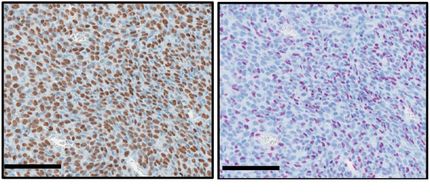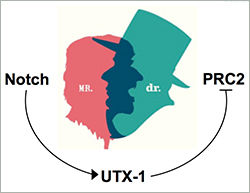Study: Target Specificity is Primary Focus of Research in RNAi Technologies
While ribonucleic acid interference (RNAi) offers a fresh approach to drug discovery, validation, and delivery, current research efforts gears toward improving target specificity. In this regard, scientists are giving top priority to finding the most efficient means to deliver or transfect RNAi into mammalian target genes.
Successful delivery of RNAi depends on a few key factors such as the target cell line, RNAi concentration, ratio of RNAi to the transfection reagent, cell confluence during transfection, and incubation time.
"Determining the most effective snippet of RNA for each gene of interest usually requires testing more than three to four different RNAi sequences," says Frost & Sullivan Industry Analyst Giridhar Rao. "To test and compare any given RNAi sequence, researchers need to monitor and optimize RNAi purity, integrity, uptake, and cell viability."
Off-target effects are likely to occur when the sense strand of the RNAi fails to guide the gene silencing process properly. Moreover, potential cross-hybridization with mismatched sequences reduces the specificity of RNAi.
"The design of an RNAi plays a vital role in determining the success of RNAi experiments," observes Rao. "A well-designed RNAi is more effective in gene silencing and has better chances of targeting the messenger RNA and minimizing off-target effects."
Studies have already shown that select RNAi molecules specifically target and demonstrate effective and sustained reduction of the alpha-synuclein gene expression. Pre-clinical results from these studies forecast the development of RNAi therapeutics to treat Parkinson's disease.
The susceptibility of certain RNAi molecules to rapid degradation by nucleases in serum and other body fluids is a concern for most researchers since stability is imperative for success in therapeutic applications.
"The key is to attain optimal stability," says Rao. "Very high stability could cause lodging of residual RNAi in the body and this can lead to increased toxicity."
In recent studies, RNAi molecules were shown to be stable, with a long half-life, in both serum and brain extracts. Chemical modifications that increase RNAi stability were also successfully developed and tested.
Industry and academic research in the RNAi sector continues to grow. Since its discovery in 1998, the number of published research papers pertaining to RNAi has increased from 15 to 1,000 in 2003.
After recent successes using RNAi to attack viruses such as HIV, and hepatitis B and C, the technology shows further potential for treating renal and metabolic disorders, cancers, and even diseases of the central nervous system.
Having proven itself in high-throughput screening, RNAi drugs might be a reality by 2010. The RNAi therapy that is likely reach humans first is those targeting macular degeneration, a leading cause of blindness.
"Though RNAi looks set to dominate drug validation and other genomic research, standardization is essential for it to leave the realms of the lab and gain acceptance as a mature technology," concludes Rao.
Topics
Organizations
Other news from the department business & finance

Get the life science industry in your inbox
By submitting this form you agree that LUMITOS AG will send you the newsletter(s) selected above by email. Your data will not be passed on to third parties. Your data will be stored and processed in accordance with our data protection regulations. LUMITOS may contact you by email for the purpose of advertising or market and opinion surveys. You can revoke your consent at any time without giving reasons to LUMITOS AG, Ernst-Augustin-Str. 2, 12489 Berlin, Germany or by e-mail at revoke@lumitos.com with effect for the future. In addition, each email contains a link to unsubscribe from the corresponding newsletter.






















































